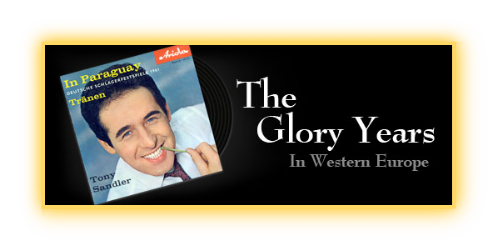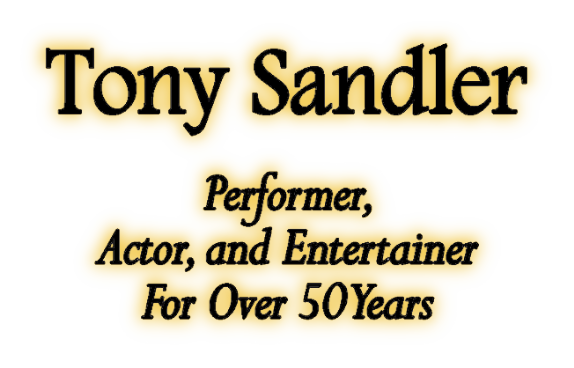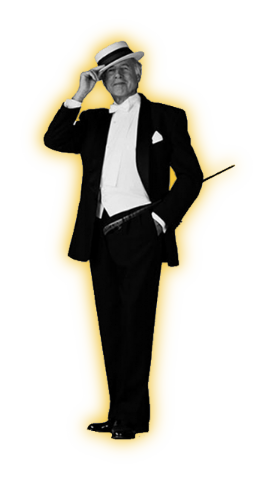
Tony Sandler was twenty-four years old with his singing career already well established in Belgium, when German recording producer for Ariola Records, Werner Mertin discovered his talent and flew Tony to West Berlin to record. Post World War II Berlin was now isolated from West Germany (The Federal Republic of Germany), and was situated 110 miles behind the “Iron Curtain” in the Russian communist sector of Germany, the German Democratic Republic, or “East Germany.”
The western allies had been guaranteed both an air and land corridor to their sector of Berlin, and it was possible for Westerners to pass into the communist East sector only through strictly controlled checkpoints. For most Easterners, travel to West Berlin or West Germany was almost impossible, and any Easterner who attempted to cross was sure to be met by machine gun fire from Soviet guards. Tony could fly to Berlin only from Frankfurt, only on Pan American, and en route Tony could see the faces of Russian pilots in the fighters on either side of him as they escorted his plane through the corridor. Cold War tensions mounted as Tony recorded in West Berlin just 100 yards from the heavily guarded wall that separated Berlin’s east and west sectors.
The air in West Berlin was electric, charged with the intrigue of overt and covert international espionage and a passionate live-for-the-moment romance where everything was possible – as long as the Allies could maintain control of that 185 square mile island. Much of West Berlin had been flattened in World War II, and though the bombed out shells of some structures still remained, much of the rubble was being cleared and new construction projects dominated the cityscape. Ariola’s studio was essentially a basement, a remarkable one-story, state-of-the-art studio built in the ground just one hundred yards from the Berlin Wall. Businesses thrived and exquisite restaurants and audacious nightclubs brimmed with cosmopolitan patrons, both civilian and military. Werner Mertin insisted on taking his young protégé out on evenings to see and experience the adventures Berlin had to offer. Tony laughs when he recalls how he was both shocked and amazed at the many sides of humanity he witnessed in West Berlin. With Ariola, Tony knew that he was living an opportunity sought by every performer in the world and won by only a handful of the very best. He was thrilled.
Thus began a whirlwind series of recordings that rocketed this young singer to international fame. Between 1956 and 1963 Tony Sandler recorded over a hundred singles with Ariola and Polydor Records in Berlin, Munich, and Hamburg, Germany; with Vogue Records in Vienna, Austria; and with Bluebell Records in Milan, Italy. Producers at these prestigious recording studios explored Tony’s versatile talent to its full potential and spared no expense in providing him superb and well-renowned orchestras including Werner Müller (Ricardo Santos), Kurt Edelhagen, Helmut Zacharias, and Ernst Kugler. Seventeen of these singles have been restored for a recent release on compact disc entitled, Und War Es Noch So Schön…Although it was so beautiful, I had to say goodbye.
Tony’s schedule became crowded with stage performances and television shows at night, with interviews, marketing appearances and recording sessions during the day, and movie contracts and film shorts wherever he could squeeze them in. Tony had charisma, he had an exceptional talent, and he was a quick study. Producers were delighted with Tony’s command of his craft, his fluency in five languages, and his ability to “sell” a song to any audience. He was their racehorse and Tony enjoyed running. But he also took time to enjoy the bounties of his success. Tony had a boyish charm, with good looks and a sex appeal that matched the promise of his masculine baritone voice. He easily captured the hearts and imaginations of fans throughout Western Europe and England just by being himself. A continent ready to put the war years to rest quickly embraced this bonvivant, their new darling of romance. The European studios experimented with a variety of musical styles that grew in popularity, and at the same time provided material that revealed the trademark sensuality of their attractive young star.
The Italian Riviera was famous for its particularly mild climate, the charm of its old fishing ports and the beauty of its landscape, and was the destination of choice for European jet setters, film stars, the wealthy and the famous. Tony’s mainstay was The Italian Riviera dei Fiori, at the swank Café Roma in Alassio, by San Remo. Tony has fond memories of the Café Roma with its 650-seat theatre overlooking the Mediterranean Sea. His shows there started in April and ran through the end of October. Each night a spectacular variety show played to a packed house with its headliner, Tony Sandler, performing the last hour. Here Tony’s multi-lingual ability was paramount, and he maintained an amazing success record for five years entertaining international audiences that included German, Dutch, Scandinavian, French, Swiss, Austrian, Belgian, and also English speaking travelers.
Tony now spent only a tiny fraction of time in his native Belgium, for his fame had spread across Western Europe. His schedule still included his shows at the Café Roma on the Riviera. But he was flooded with show contracts that brought him to Europe’s foremost entertainment capitols. He performed in the continent’s top theatres and entertainment centers, including Hilversum in Holland; West Berlin, Hamburg and Munich in Germany; Zurich in Switzerland; and Vienna and Linz in Austria. Grand tours with big orchestras were the order of the day for Tony, including tours with the very popular orchestra of violinist Helmut Zacharias. In the 1950’s Zacharias was considered to be one of the best jazz violinists of Europe. In Germany Tony also performed at the big and very popular song festivals and on musical television shows alongside many of the top German stars. Tony reflects that he was later surprised and delighted to see his friend, German singing star Catherina Valenti in Chicago. She had been booked for a run at the Palmer House following Sandler & Young. But Tony still feels that none of these stars gained the recognition they deserved across the Atlantic.
Tony appeared in four very popular musical films produced by Italian and German film companies. Because they were shot on location, Tony worked in some of the most beautiful and breathtaking sites in Europe, including the high Alps region of Austria, Rome (with a major scene at the Fontana di Trevi), and the romantic and sunbathed countryside of Tuscany. One film was shot in West Berlin. It was a dark drama centered on the danger and intrigue that stereotyped the romance of Berlin. None of these films were classics, and it is unlikely that copies remain. However they were big hits at the time, and Tony had great fun making them.
At one time Tony stepped into the arena of yodeling when this art was reserved for Austrian and Swiss singers and a handful of American singing cowboys. Tony simply could not resist letting it out of the bag that he could yodel, for although he was famous internationally, he was an unknown in this particular realm of music. Relying strictly on the strength of his vocal agility he easily won an international yodeling competition. Thereafter his yodel was reserved as a treat for performances for Austrian and Swiss natives. But for Tony this vocal exercise also enabled him to add an easy authenticity to his Spanish music.
At the Café Roma Tony met many celebrities and developed strong friendships with stars and town folk alike. One friend of Tony’s who was less known at the time was tenor Sergio Franchi. Sergio was also performing on the Riviera, though at a less glamorous venue, but he would precede Tony to Las Vegas to headline as a big star at the Sahara. Their friendship would be rekindled when Tony moved to America. English stars Eric Sykes and Max Bygraves invited Tony to London to perform at the Palladium where he co-stared with Lena Horne. Little did Tony know that he would again be on the stage with Lena, but it would be later, when Tony returned to London with Sandler & Young as hosts of the Kraft Music Hall.








